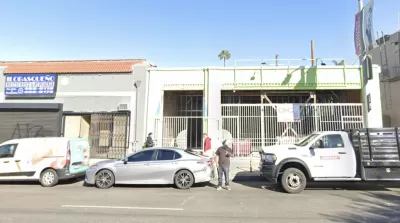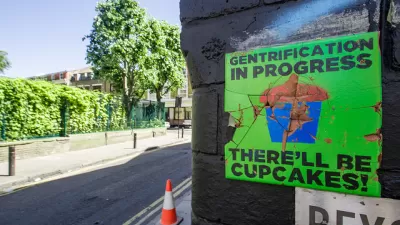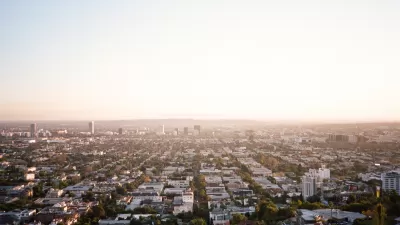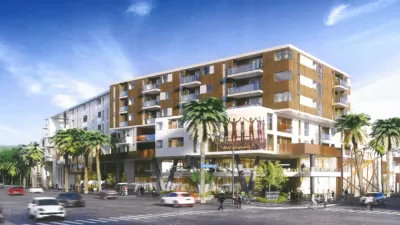New art galleries are moving into a neighborhood recently dubbed ‘Melrose Hill,’ prompting both derision and concern on the part of local residents.

Writing in Hyperallergic, Matt Stromberg calls out the new art galleries popping up in a Los Angeles neighborhood being billed as ‘Melrose Hill’ for claiming to ‘revitalize’ an area that never lost its vitality to begin with. “In fact, ‘desolate’ was precisely the word used to describe the area in a Vanity Fair article last month on the recent influx of galleries to the block, which drew immediate and sharp criticism from Angelenos who know better.”
As Stromberg explains, “The phenomenon of a neighborhood being re-branded by developers, often aided by Google Maps, to present an area as a kind of ahistorical blank slate is nothing new.” Stromberg adds, “There is, in fact, a neighborhood called Melrose Hill, just not where these new art spaces are located.” The real Melrose Hill includes a Historic Preservation Overlay Zone (HPOZ) that protects 45 historic California bungalows.
As for the ‘desolate’ neighborhood in question, “Residents are overwhelmingly renters, with low to average median incomes for the city. Once you move off the main commercial and transit arteries of Western and Melrose, the streets are filled with low apartment buildings, single-family homes, and courtyard housing, originally built by Hollywood studios to house their workers.”
Longtime community members express concern that the galleries have not conducted public outreach or attempted to integrate themselves into the existing community while bringing hundreds of cars crawling the neighborhood for parking to gallery events. The pattern is familiar for L.A. neighborhoods, which regularly undergo ‘rediscovery’ and gentrification. “Large sections of LA have been transformed by development and gentrification over the past 20 years, but the speed at which it is taking place here seems exceptional.”
FULL STORY: Art Galleries Are Not Reviving a “Desolate” LA Neighborhood

Manufactured Crisis: Losing the Nation’s Largest Source of Unsubsidized Affordable Housing
Manufactured housing communities have long been an affordable housing option for millions of people living in the U.S., but that affordability is disappearing rapidly. How did we get here?

Americans May Be Stuck — But Why?
Americans are moving a lot less than they once did, and that is a problem. While Yoni Applebaum, in his highly-publicized article Stuck, gets the reasons badly wrong, it's still important to ask: why are we moving so much less than before?

Research Shows More Roads = More Driving
A national study shows, once again, that increasing road supply induces additional vehicle travel, particularly over the long run.

Which US Rail Agencies Are Buying Zero-Emissions Trains?
U.S. rail agencies are slowly making the shift to zero-emissions trains, which can travel longer distances without refueling and reduce air pollution.

San Diego School District Approves Affordable Housing Plan
The district plans to build workforce housing for 10 percent of its employees in the next decade and explore other ways to contribute to housing development.

Lawsuit Aims to Stop NYC’s ‘City of Yes’ Zoning Reforms
A lawsuit brought by local lawmakers and community groups claims the plan failed to conduct a comprehensive environmental review.
Urban Design for Planners 1: Software Tools
This six-course series explores essential urban design concepts using open source software and equips planners with the tools they need to participate fully in the urban design process.
Planning for Universal Design
Learn the tools for implementing Universal Design in planning regulations.
City of Moreno Valley
Institute for Housing and Urban Development Studies (IHS)
City of Grandview
Harvard GSD Executive Education
NYU Wagner Graduate School of Public Service
City of Cambridge, Maryland
Newport County Development Council: Connect Greater Newport





























